The best RTS campaigns on PC
You and whose army?
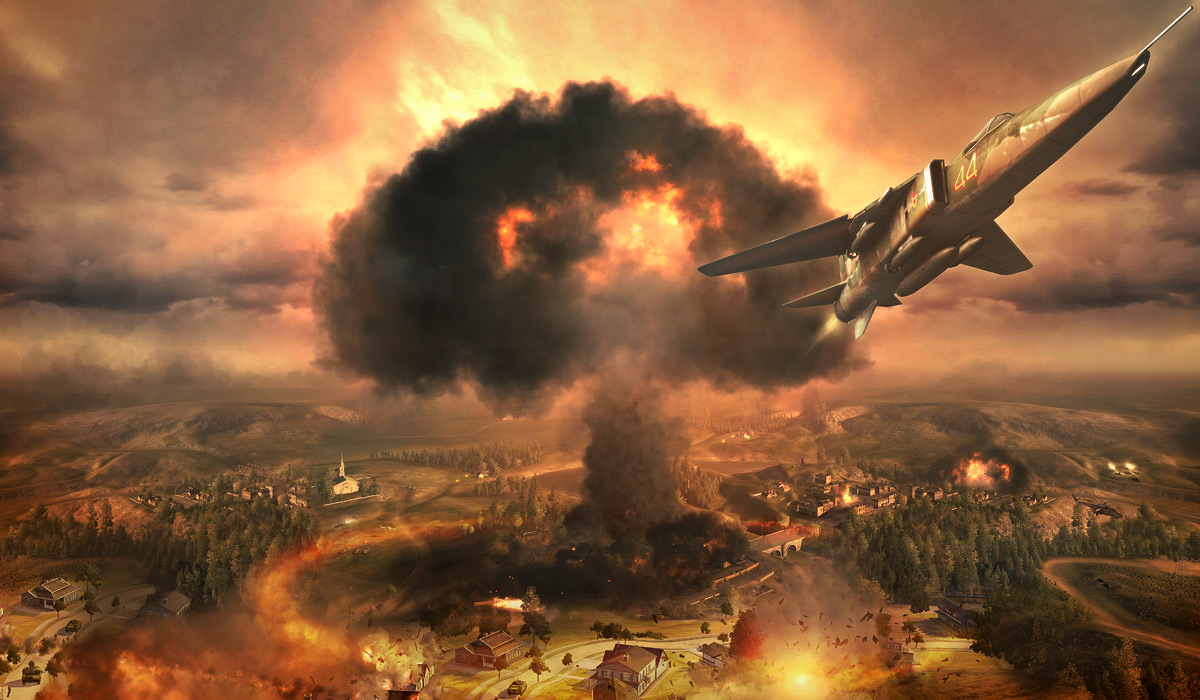
Many of the best RTS campaigns on PC are classics of the genre. These days, it's uncommon to see an RTS released that doesn’t have competitive intentions. From larger titles like Halo Wars 2 or Dawn of War III to smaller ones like Empires Apart, a lot of work in real-time strategy games typically goes into the multiplayer experience. However recently, with games like They Are Billions or Frostpunk, we are seeing some leanings back toward a singleplayer focus.

The best strategy games
The best adventure games
The best puzzle games
The best stealth games
The best survival games
Let's celebrate the qualities of a great singleplayer real-time strategy campaigns by picking out some of the best ever made. In so doing, it’s very difficult to avoid a retread some of the common giants in this space: Relic, Blizzard, and Westwood’s games have all taken world-building and storytelling very seriously and that shows in the quality of their campaigns. Alongside these, I’m going to place some titles that perhaps haven’t gotten quite as much attention before, or that might’ve slipped by unnoticed by some people.
This isn’t an ordered list; I started out trying to put them in a countdown, but these games are often good for such different reasons it seems silly to rank them. Let’s get cracking. Note, there are a few spoilers for the older games in the list.
Battle Realms
PC Gamer's got your back
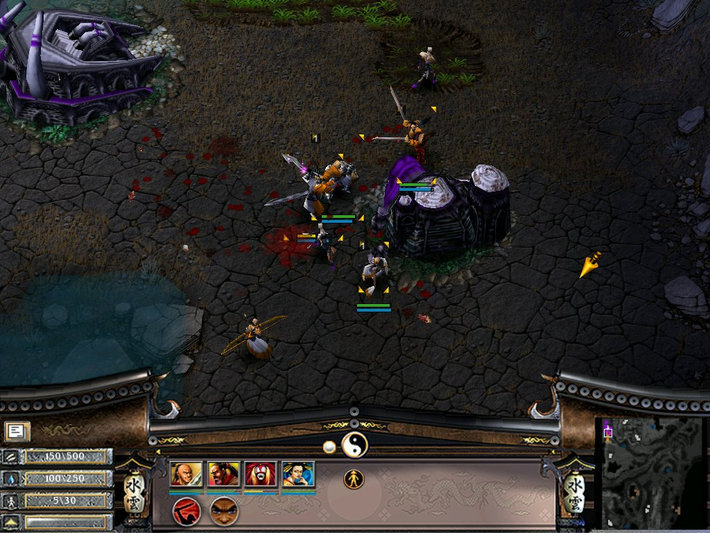
Often when we discuss advanced combat systems in RTS, games like Dawn of War, Men of War, Company of Heroes, or WarCraft 3 come up. Liquid Entertainment’s 2001 RTS Battle Realms deserves a prominent seat at this table. Released about a year before WarCraft 3, Battle Realms features a number of fun systemic twists. You could level up peasants to any combat unit, spend one resource (water) to replenish another (rice), dynamically switch units between ranged and melee combat, and upgrade systems using a novel Yin/Yang system.
The campaign itself isn’t as polished as some of the others in this list: all cutscenes are rendered in-game, which looks pretty dated these days. But the core formula still feels fresh in 2018. Taking the mantle of either the Serpent Clan, or the stalwart Dragons, you must shadow the exiled hero Kenji as he strives to re-establish the dominance of his chosen clan. I put a lot of weight on choice in campaigns, and Battle Realms does a good job of this, giving you choice over the territory and scenario you take on next. Winning battles can provide bonuses in future missions, which adds a note of persistence across missions.
Company of Heroes 2: Ardennes Assault
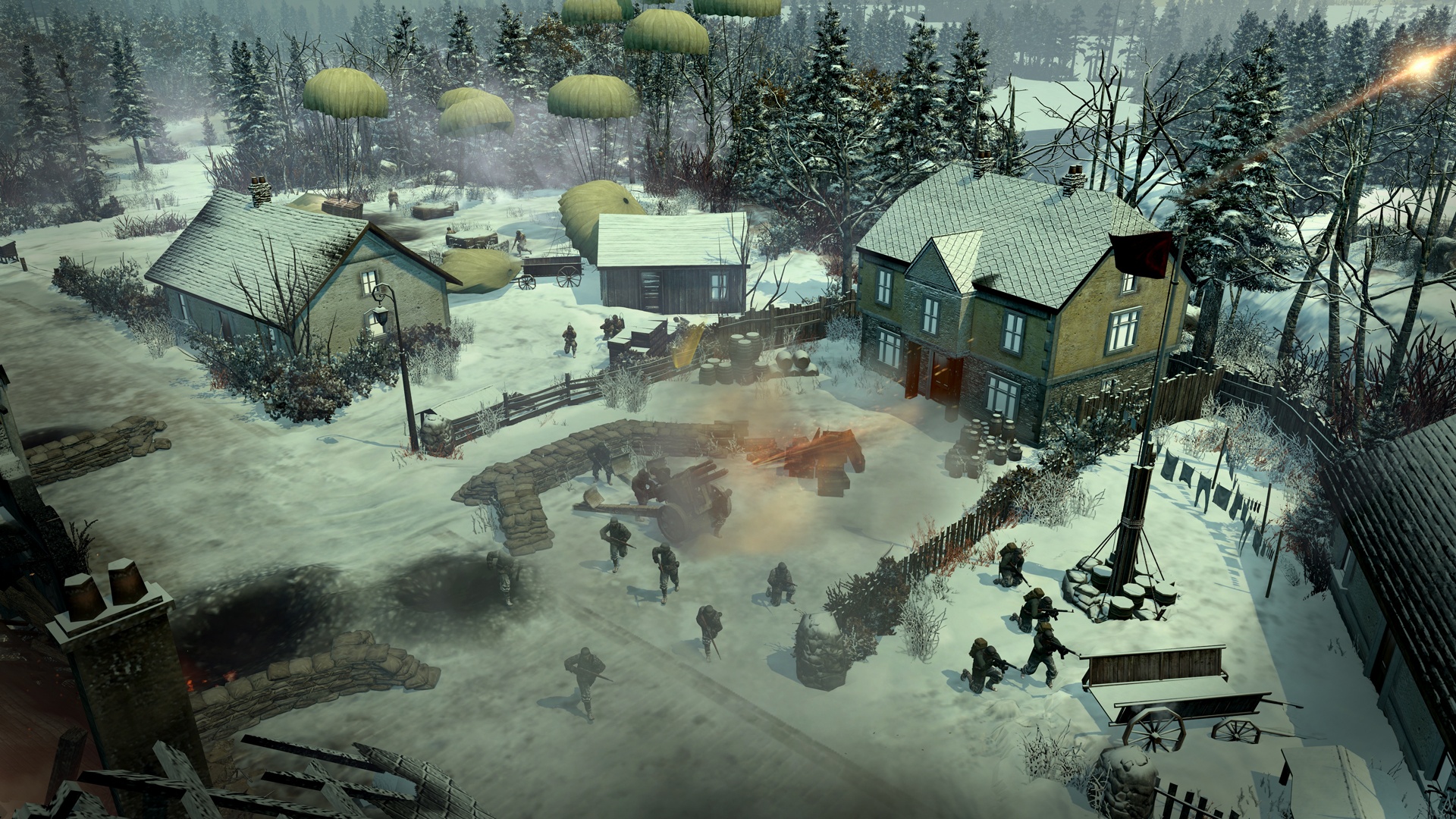
Company of Heroes 2: Ardennes Assault tells the story of the Battle of the Bulge through the eyes of four commanders (three of which are playable). Each has their own backstory and personality, which you see reflected in the forces of the three playable leaders. The armies are interesting, but it's the surprising depth and uncompromising difficulty of the Ardennes Assault meta-layer map that really sets it apart.
One thing I kind of like about several of the RTS on this list is that they don’t try to emulate the political layer of Total War games and instead let battles take front and center. Ardennes Assault does this by using reinforcements to create rewards and consequences. defeated enemies can retreat to reinforce territory you haven’t taken yet, making subsequent missions harder than they otherwise would have been. You can cut off these retreating enemies by maneuvering your companies on the map, but doing so means you might miss out on time-critical missions. There’s a lot of nuance in the system, and honestly this campaign style is one I’d love to see ripped off time and again.
Mission design is relatively varied, from holding a defensive line to standard Control Point capture, and the finale is memorable without being over-the-top ridiculous like some final missions can be (It’s coming up next, but Battle for Dune could fit here) easily.
Emperor: Battle for Dune
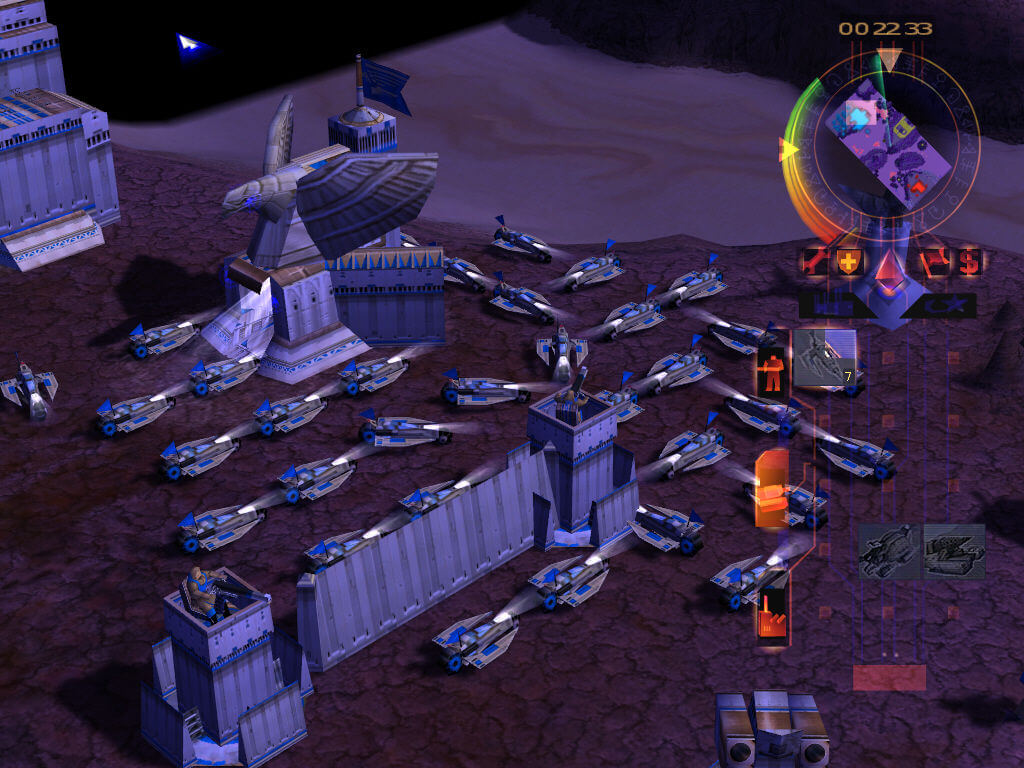
Some titles on this list are here because of the presentation of their story, and how memorable their characters are. Some titles are on this list due to the replayability and depth of their systems. Emperor: Battle for Dune is here because of all of these things.
Westwood adapted the Command & Conquer formula and dressed it in the campiness of the 1984 Dune movie. The campaign gives you a Risk-style territory map where you must battle two AI Houses for control of the planet Arrakis.
The game throws in story-progression missions every couple of levels to give you a break from the unrelenting desert—some missions take place on Spacing Guild Heighlighers or other planets like Caladan. You can also ally with (or fight) the Minor Houses, which creates some variation across playthroughs. Along with Ardennes Assault, Emperor: Battle for Dune remains the gold standard for an enjoyable meta-campaign. And, along with Red Alert 2, Emperor stands strong as one of the best examples of enjoyable campiness in real-time strategy gaming.
Dawn of War: Dark Crusade
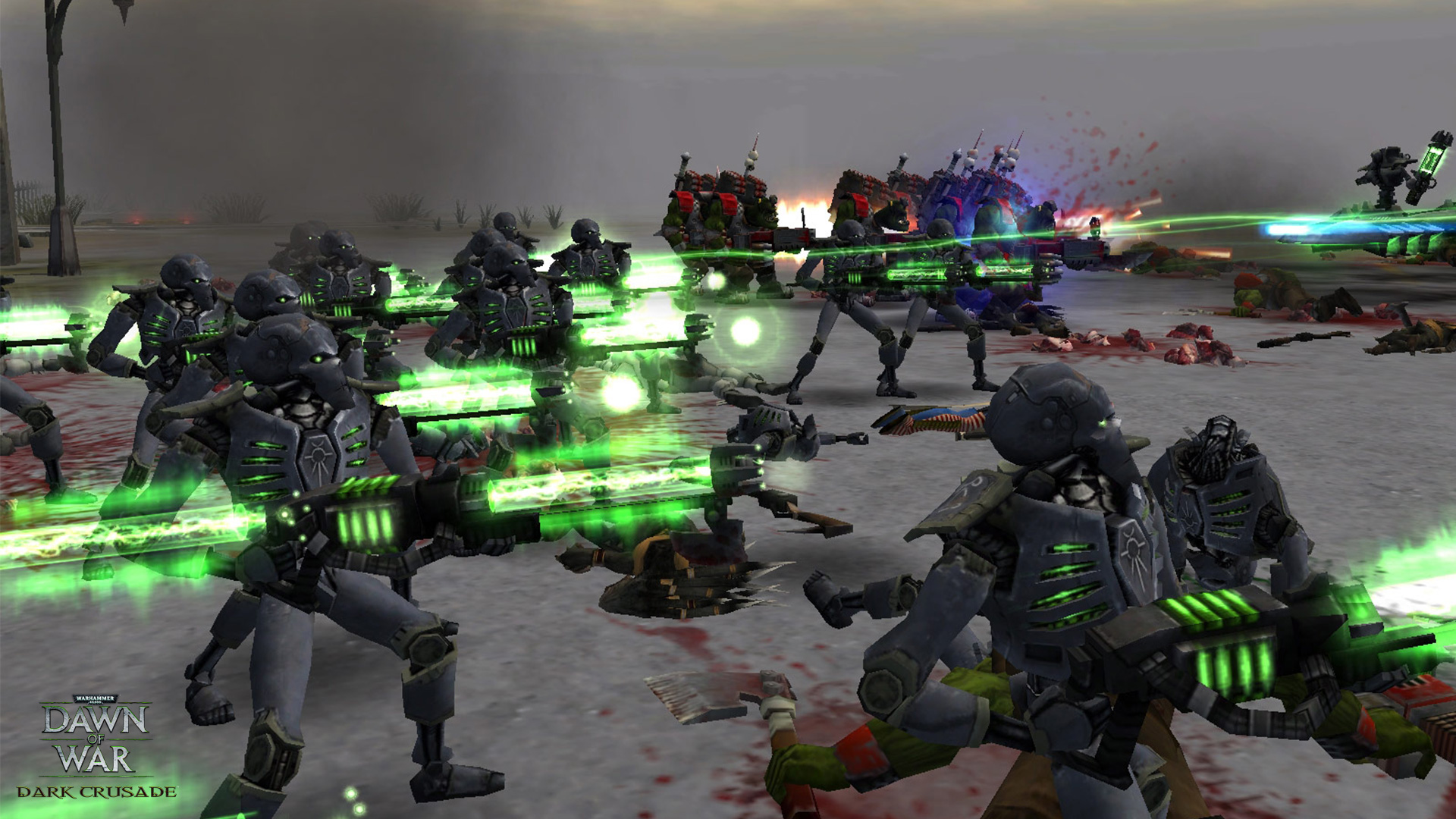
Dark Crusade introduced two of the most interesting and fun factions in all of RTS gaming: the Necrons and the Tau. These factions are interesting in and of themselves as members of the Warhammer 40,000 lineup, but in the context of RTS, they’re quite a pair.
Other games in this list, like Ardennes Assault and Emperor: Battle for Dune, have meta-layer strategic campaigns, and darn good ones. Dark Crusade’s iteration stands out amongst them for a number of reasons. Territories give you access to unique customizations that can change how you approach the game. Given the start locations of each faction, you can acquire these customizations in different orders. Also, as you progress you’re able to apply wargear to your chosen leader, further customizing them and giving you a fun sense of progression and growth even without much of a story to go on beyond Warhammer-generic Endless War.
There are other nice touches too. The campaign preserves a your base after you have won a province (something I really would like to see happen more in RTS—it feels right to come back to somewhere you’ve already battled and see your progress in that area preserved). The Honor Guard for faction leaders are another neat persistent element.
Homeworld
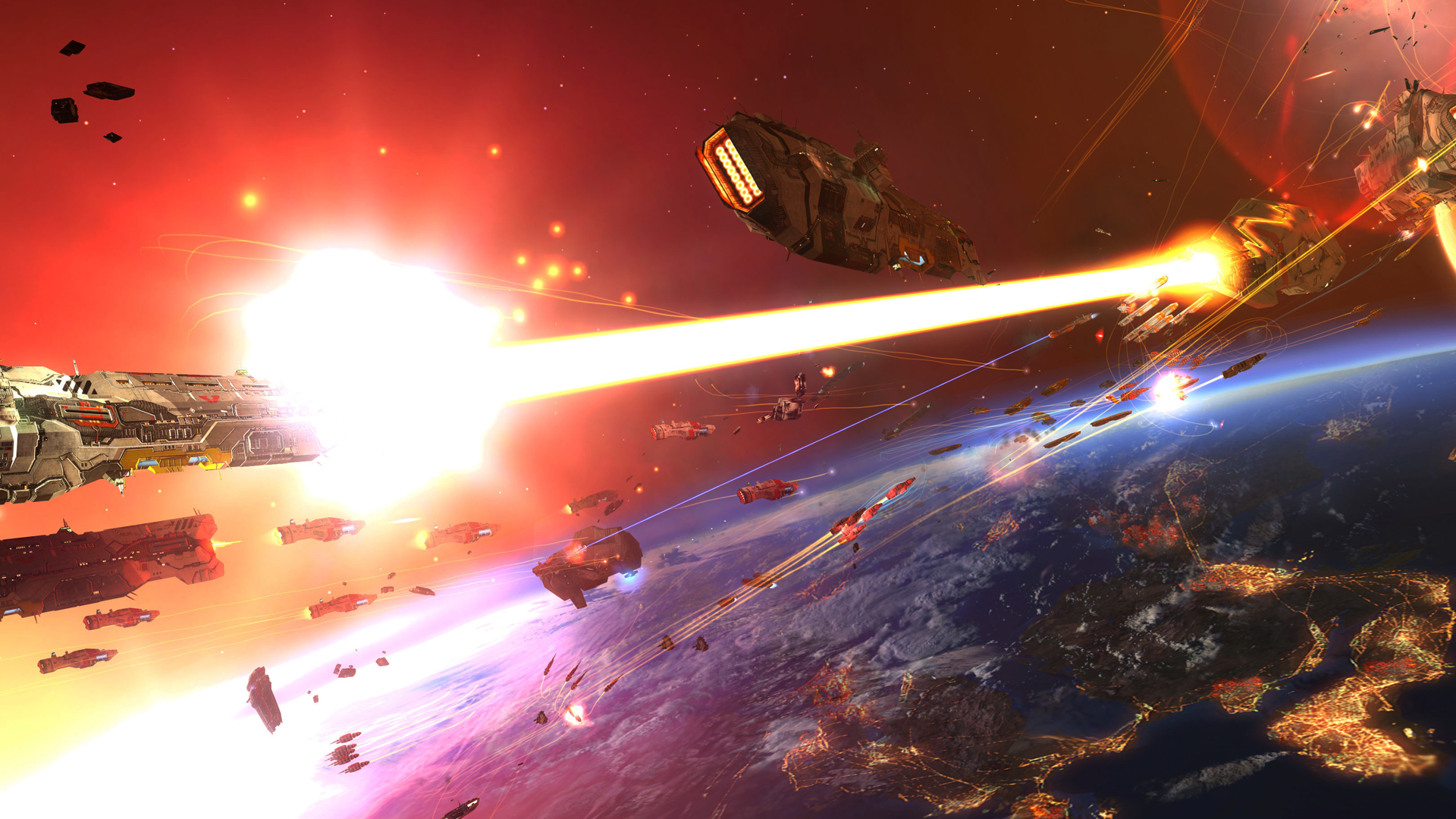
Relic’s Homeworld remains one of the most compelling real time strategy games ever made. It's rare for a real-time strategy game to create a universe of such scale and poignancy. Karan S’Jet and the Mothership have become iconic characters, and the game has an emotional weight I haven't experienced in another RTS game.
I tend to view campaigns that offer some choice to be superior to linear ones, partially because I value replayability in singleplayer, but also partly because such choices can provide powerful feelings of agency to the player. Homeworld's linear campaign is an exception, however. Your forces carry over from mission to mission, which creates consequences and captures the tone of a fleet scrabbling to survive.
Homeworld: Deserts of Kharak
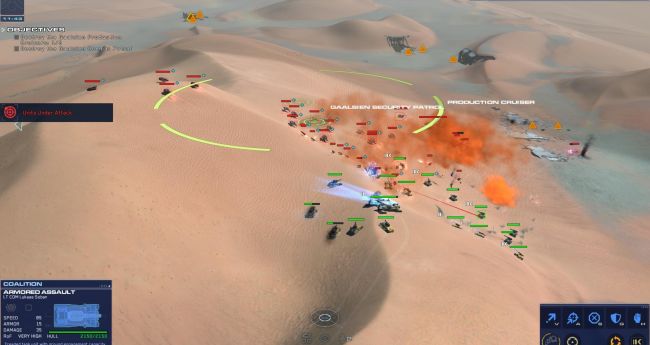
I was skeptical of Deserts of Kharak. I didn’t think that a game based on Homeworld’s DNA could work properly on the surface of a planet, but it does this surprisingly well, and terrain encourages a lot of play over features like the ridges of dunes. It also has a decent linear campaign that borrows the right elements from the original Homeworld games.
On the default campaign setting you bring units across from mission to mission, and the missions are well paced to allow you a breather after finishing a particularly tough battle. You can turn this off at any time, to swap out a broken force for a pre-set loadout for the mission—This saved me a couple of times later in the campaign when I suffered massive losses at a critical moment.
Like the core Homeworld games, the game is deeply atmospheric, and there were times when the desert around my little fleet of vehicles felt vast in a way that, for instance, I never felt in a game like Battle for Dune. The tone is sometimes interrupted by vehicles doing awkward dances trying to navigate lumpy deserts, but Blackbird did a phenomenal job of giving the world a sense of scale. Also in the spirit of its predecessors, the cadence of the story ratchets up at just the right times, increasing the stakes and providing twists that elevate the game far above standard RTS fare.
The Gaalsien and their leader, the K’had Sajuuk, are wonderful villains, almost akin to the Brotherhood of Nod from Command and Conquer. Or perhaps like the fremen from Dune. While the story differs from previous Homeworld canon, the overall quality of Deserts of Kharak’s storytelling make it one of the very best RTS campaigns released in the modern era.
Red Alert 2
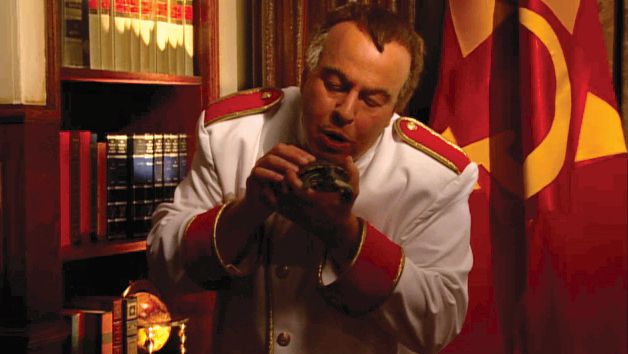
I praised Emperor: Battle for Dune for its campiness, and Westwood always did this well. But nowhere did it strike the perfect tone, in unit design and cutscenes, as in Red Alert 2. Like most of Westwood’s campaigns, Red Alert 2 features separate stories for both the Allies and the Soviets—for my money, both are pretty darn good, but the Soviet campaign is more enjoyable overall. You really just play through the pre-defined story with no real choices or branching in the plot, but everything is so over-the-top it’s really hard to mind.
Nuclear Missiles, Psychic Beacons, Yuri’s thousand-yard-stare, Einstein and the Chronosphere, turning the Eiffel Tower into a giant Tesla weapon, the Soviet Premier being apprehended in his underwear—there are so many hilarious moments in the game, accented by suitably ridiculous FMV. Like WarCraft 3, this is linear storytelling done right: original, entertaining, and memorable. Also, I need to give them props for the detailed environments: Westwood typically does a good job of giving you a sense of place: making cities actually kind of look like, well, cities. It’s all too common in RTS to be fighting in anonymous hinterlands, and Red Alert 2, especially for its time, went a step above.
StarCraft 2: Wings of Liberty
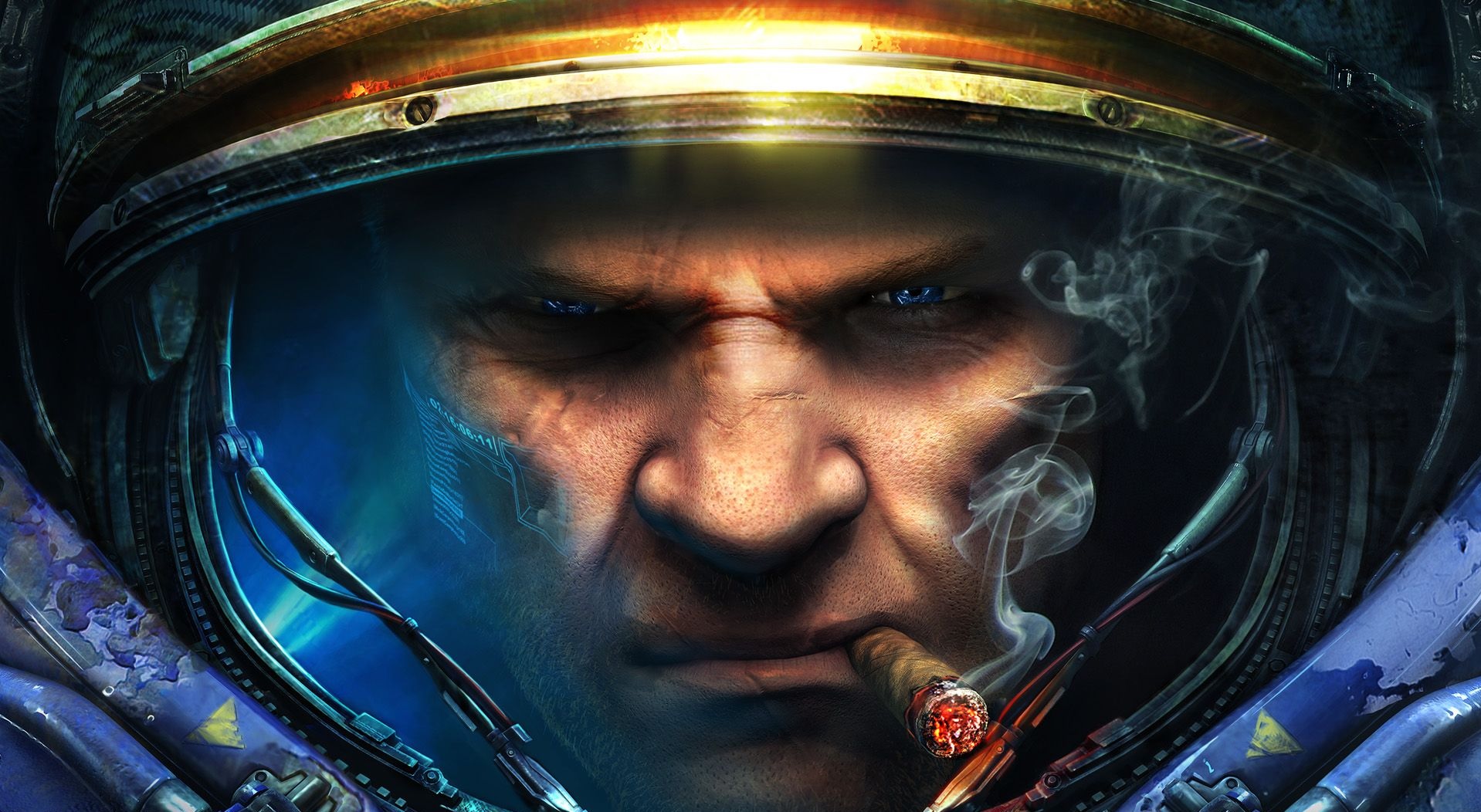
This one might have to come with some caveats. StarCraft and its expansion, Brood War, are iconic games in their own right. But from an execution perspective, StarCraft 2 is simply more enjoyable. Blizzard has had a long time to hone its craft, and while the game may not have done proper justice to the story set up in the series’ first installment, there’s no doubt that the actual mission design and entire between-mission interface ranks among the very best the genre has to offer.
Every mission has a twist. In one mission you visit corpse of the Overmind, in another you have to flee from a huge wall wall of fire. Side missions matter, helping you to specialize your units and tech outside of combat, and you have some choice in how to proceed between missions. You can talk to and interact with the cast of characters growing around you, and the cantina even has a phenomenal little arcade game.
There’s a bit of persistence to your choices, though not to the point where (as in Homeworld or Ardennes Assault) it can actively interfere with your ability to complete the game. Unconstrained by the need for multiplayer balance, the campaign lets you upgrade units into powerful variants and customise your overall force. The standalone expansions, Heart of the Swarm and Legacy of the Void, also offer splendid campaigns that thoroughly explore the Zerg and Protoss factions.
WarCraft 3
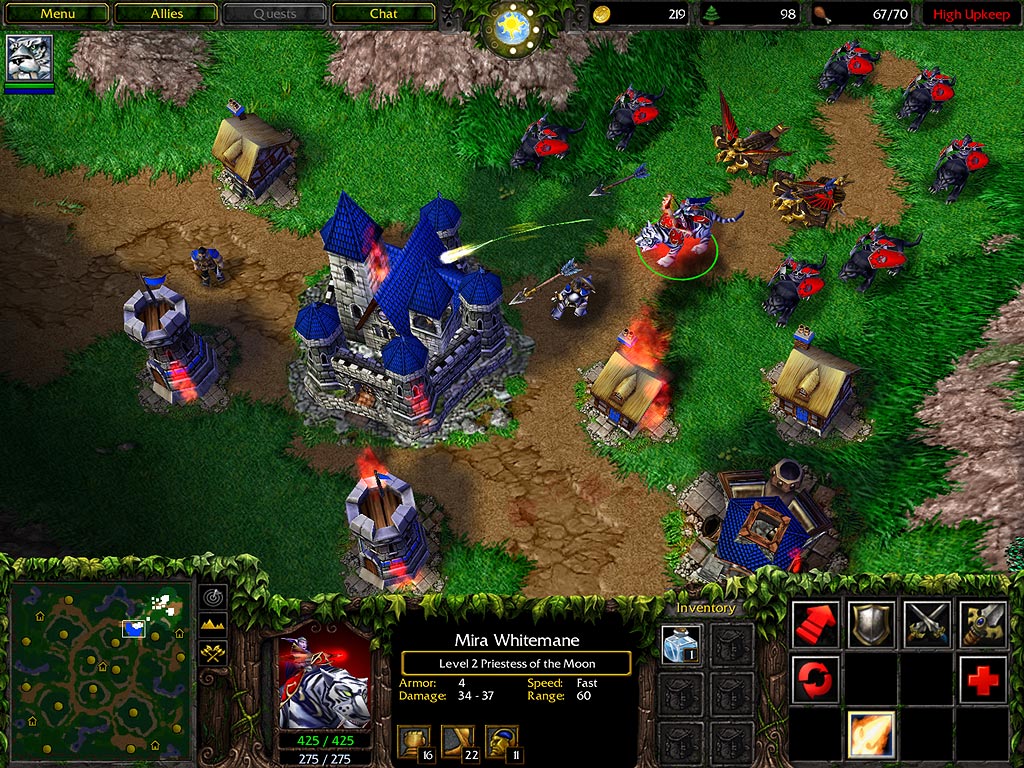
WarCraft 3 might be the pinnacle of Blizzard's storytelling. The quaternate storyline of Medivh, Thrall, Arthas, Kel’Thuzad Jaina Proudmoore, Tyrande, Illidan, Mannoroth and the battle against Archimonde is cinematic, epic, and tied together with some of the best cutscenes in the genre (still). Mission design is varied, and each faction is given its time in the sun.
The turning of Arthas is perhaps my favorite moment in all of RTS gaming. Seeing his rising despair and frustration with the limitations of being good, committing genocide at Stratholm, killing plagued villagers, accepting a demonic weapon in order to defeat the Dreadlord Mal’Ganis, killing his father, and then starring again in the Undead campaign: it’s wonderful.
World in Conflict

In the list above, I’ve gushed over story presentation, mission design, choice and flexibility in how to proceed through the game, replay value, and frivolous campiness. I’ve also lauded making the player feel a part of a larger world (something too many RTS are incredibly bad at). This last is where World in Conflict shines.
In this campaign the onus is on you to assist your AI-controlled team, trying to complete their objectives in coordination with the larger war effort. This is reinforced by stunning narration (I could listen to Alec Baldwin read the phone book, to be fair) and a well-written story that ends up being surprisingly powerful.
Technically, I’d consider World in Conflict to be a real-time tactics game rather than an RTS: there’s no real base building or economic progression, and the entire emphasis in the game is on controlling ground and using your units effectively. While some RTTs can feel like an RTS with half of the game stripped out, World in Conflict is prominent among the RTT that stand strong on their own merits. The campaign is a great showcase of WiC's particular take on the genre.
The biggest gaming news, reviews and hardware deals
Keep up to date with the most important stories and the best deals, as picked by the PC Gamer team.

